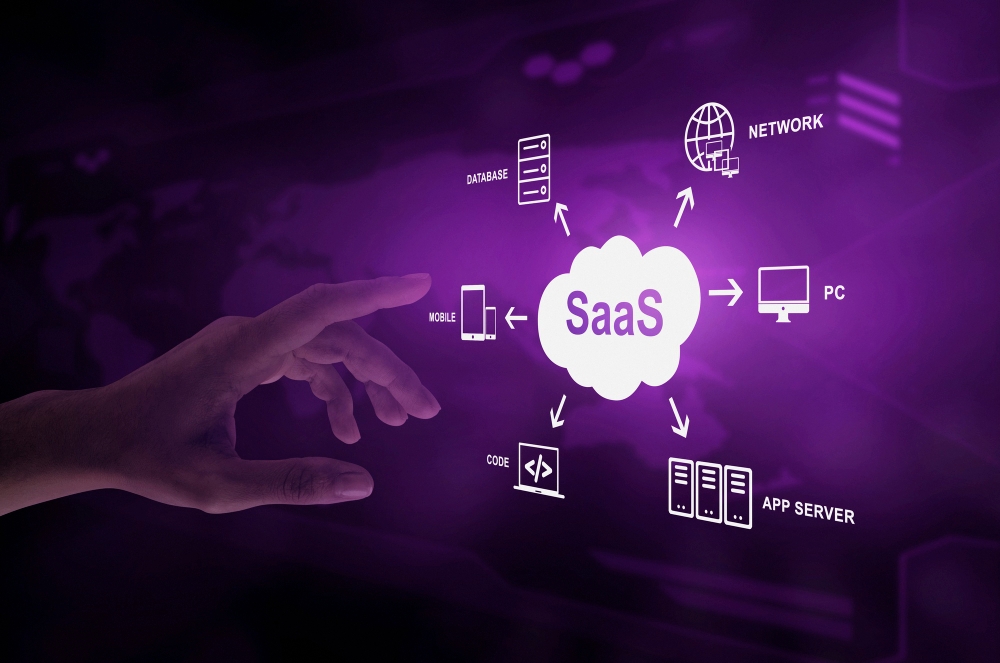Introduction: Why SaaS Dominates the Digital Era
The digital economy is built on flexibility, scalability, and rapid innovation. Companies no longer want rigid software that requires installation, updates, and heavy infrastructure management. Instead, they prefer solutions delivered directly through the cloud, scalable, cost-efficient, and always accessible. This is where SaaS product development plays a central role. From startups to enterprises, businesses are leveraging SaaS to improve efficiency, reduce IT costs, and create value-driven solutions for global users.
Building a SaaS product is not just about coding; it’s about envisioning a problem, creating a solution that scales, and ensuring it provides seamless user experiences. In this blog, we’ll walk through every stage of SaaS product development from the initial idea to launching and scaling a robust, cloud-based solution.
Understanding SaaS Product Development
At its core, SaaS product development refers to the end-to-end process of creating software that is delivered to users through the cloud. Unlike traditional software models, SaaS is subscription-driven, meaning users pay for access instead of owning a license. This model provides businesses with recurring revenue and customers with constant value.
The uniqueness of SaaS lies in its flexibility. Development teams must focus not only on building software but also on designing infrastructure that can handle growing user demand. As a result, SaaS product development requires careful planning, cloud-native architecture, user-centric design, and robust security mechanisms.
SaaS - Preferred Model Today
SaaS has overtaken traditional on-premise software for several reasons. First, it reduces upfront costs for customers, who no longer need to purchase hardware or worry about software maintenance. Second, SaaS is highly scalable; companies can easily increase server capacity as demand grows. Third, SaaS offers faster deployment and accessibility, since users can access the product from any device with an internet connection.
These advantages make SaaS product development the go-to approach for modern businesses. Whether it’s productivity tools like Slack, collaboration platforms like Zoom, or large-scale enterprise solutions like Salesforce, SaaS has become the backbone of digital transformation.
Ideation and Market Research
Every great SaaS product begins with an idea. But ideas alone aren’t enough—they need validation. In the ideation phase, entrepreneurs and product teams must identify a real-world problem that needs solving. Conducting competitor research, analyzing market demand, and understanding customer pain points are essential at this stage.
For example, when Slack was first conceived, it wasn’t built to be a communication tool. It was an internal solution for a gaming company, which eventually realized its broader market potential. This demonstrates how saas product development thrives when businesses focus on solving genuine problems that have mass appeal.
Defining the SaaS Business Model
Once the idea is validated, the next step is to decide on the right business model. SaaS products typically run on subscription plans, but these can vary: freemium, tiered pricing, pay-per-use, or enterprise licensing. The chosen model should align with customer expectations and the scalability of the product.
Successful SaaS product development requires a balance between affordability for customers and profitability for the company. For instance, offering a freemium model can attract users at the start, but businesses must ensure that premium features are enticing enough to encourage upgrades.
Building the Right Tech Stack
The choice of technology stack is one of the most critical decisions in saas product development. The stack should be flexible, scalable, and secure. Common choices include cloud platforms like AWS, Microsoft Azure, or Google Cloud. For backend development, Node.js, Python, or Java are popular options, while front-end frameworks like React or Angular provide responsive user experiences.
Microservices architecture is another key element, as it allows different parts of the SaaS application to scale independently. This ensures that when demand grows, performance remains consistent without overloading the entire system.
Designing for Scalability
Scalability is at the heart of SaaS product development. Unlike traditional software, which can remain static, SaaS must evolve with its users. This requires cloud-based infrastructure that can expand seamlessly. Features like auto-scaling, load balancing, and distributed databases ensure that performance does not degrade as the user base increases.
Scalability isn’t just about handling more users, it also means accommodating new features, integrations, and third-party APIs without disrupting the existing system. A well-architected SaaS product can serve both a startup with 50 users and an enterprise with 50,000 users.
User-Centric Design and Experience
No matter how powerful a SaaS product is, its success depends on usability. A clean, intuitive user interface (UI) and smooth user experience (UX) can make or break adoption rates. In SaaS product development, design teams must focus on simplicity, speed, and accessibility.
For example, consider products like Zoom or Dropbox. Their interfaces are designed to be simple enough for beginners yet powerful enough for advanced users. This balance is crucial to scaling successfully in a competitive SaaS landscape.
Security and Compliance
One of the most important yet challenging aspects of saas product development is ensuring security. Since SaaS applications are cloud-based, they often store sensitive customer data. Developers must integrate strong encryption, secure authentication mechanisms, and regular vulnerability assessments.
Additionally, compliance with regulations like GDPR, HIPAA, or SOC 2 is critical. Ignoring compliance can result in penalties, reputational damage, and customer distrust. Security should not be an afterthought; it must be baked into the development lifecycle.
Minimum Viable Product (MVP)
Instead of building a complete product from the start, most SaaS companies begin with a Minimum Viable Product (MVP). The MVP focuses on core features that solve the primary problem. This approach allows teams to test market response before investing heavily in full-scale development.
An MVP is a crucial part of saas product development because it provides real-world feedback. Teams can identify which features customers use most, what improvements are needed, and whether the pricing strategy works. This iterative process saves time and money while increasing the chances of success.
Quality Assurance
Before launch, thorough testing ensures that the SaaS product performs as expected. Testing in SaaS product development is more than bug fixing; it involves stress testing, load testing, security audits, and usability checks.
Since SaaS applications serve a diverse user base, quality assurance must be continuous. Even after deployment, monitoring tools should track performance and flag potential issues before they affect customers.
Deployment and Continuous Delivery
Deploying a SaaS product involves more than just uploading code to the cloud. Continuous Integration and Continuous Deployment (CI/CD) pipelines ensure that updates can be released quickly and seamlessly. This keeps the product competitive and aligned with customer needs.
Frequent updates are a hallmark of successful SaaS product development. Users expect regular improvements, bug fixes, and new features without downtime. CI/CD pipelines enable developers to deliver these updates efficiently.
Marketing and Getting New Clients
A great product means little if it doesn’t reach its audience. Once deployed, SaaS companies must focus on marketing and customer acquisition. Digital marketing strategies such as SEO, content marketing, paid ads, and referral programs play an important role.
The SaaS model thrives on customer retention. By offering excellent onboarding experiences, responsive support, and continuous value, businesses can build long-term relationships. Retained customers not only generate recurring revenue but also become advocates for the product.
Scaling the SaaS Product
The final stage in saas product development is scaling. Scaling involves expanding the user base, adding advanced features, and entering new markets. Cloud infrastructure ensures technical scalability, while strategic partnerships and integrations foster business growth.
SaaS scaling is also about data-driven decisions. By analyzing user behavior, product teams can prioritize features that drive engagement and eliminate those that don’t add value. This ensures resources are invested wisely as the product grows.
The Future of SaaS Product Development
The SaaS market continues to evolve rapidly. Emerging trends such as artificial intelligence, machine learning, and low-code development platforms are reshaping how SaaS products are built and delivered. Additionally, SaaS products are increasingly focusing on personalization and automation to enhance user experiences.
With global cloud adoption accelerating, Saas product development will remain a critical strategy for businesses looking to innovate and scale. Companies that prioritize user experience, scalability, and security will lead the next wave of SaaS success.
FAQs
1. What is SaaS product development?
SaaS product development is the process of creating cloud-based software applications delivered via subscription. It includes ideation, design, coding, testing, deployment, and scaling.
2. Why is SaaS more scalable than traditional software?
SaaS is built on cloud infrastructure, which allows resources to be adjusted automatically as demand grows, ensuring consistent performance.
3. How long does SaaS product development take?
Timelines vary depending on complexity, but building an MVP can take 4–6 months, while a full-scale SaaS product may take a year or more.
4. What technologies are used in SaaS product development?
Common technologies include cloud platforms (AWS, Azure, Google Cloud), backend languages (Node.js, Python, Java), and frontend frameworks (React, Angular).
5. How do SaaS companies ensure data security?
They implement encryption, multi-factor authentication, regular vulnerability testing, and compliance with standards like GDPR or SOC 2.
Source - https://www.tumblr.com/parker-123/795560759342104576/saas-product-development-from-idea-to-scalable






